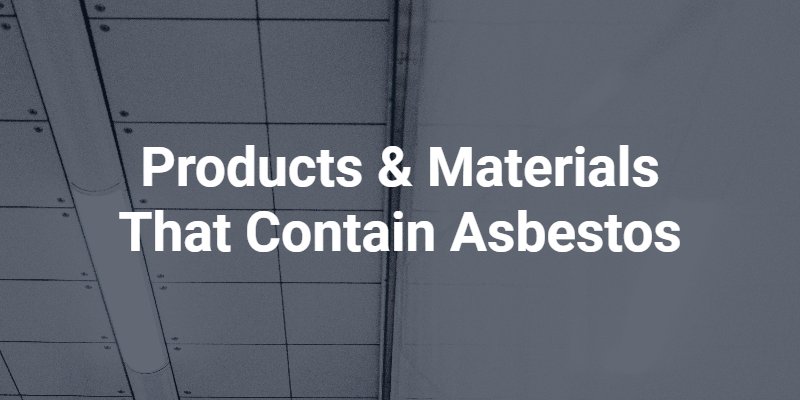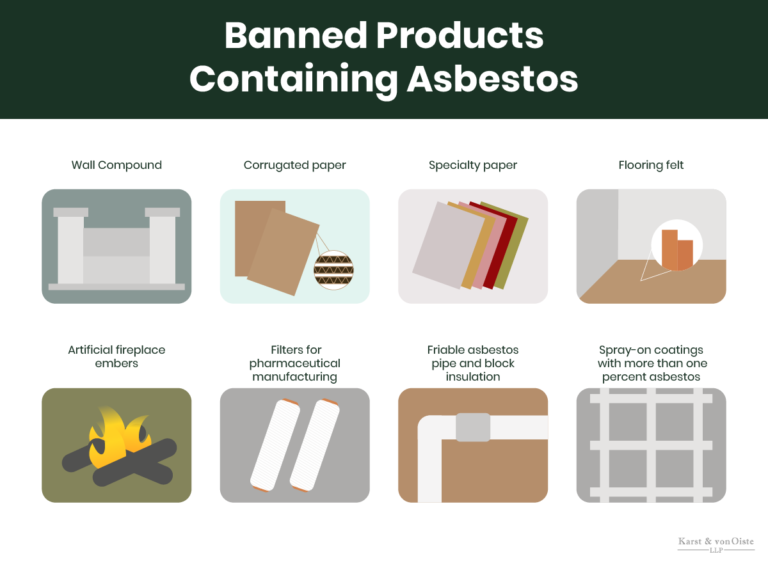Understanding Asbestos: A Comprehensive Guide To Products Containing This Material
Understanding Asbestos: A Comprehensive Guide to Products Containing This Material
Related Articles: Understanding Asbestos: A Comprehensive Guide to Products Containing This Material
Introduction
In this auspicious occasion, we are delighted to delve into the intriguing topic related to Understanding Asbestos: A Comprehensive Guide to Products Containing This Material. Let’s weave interesting information and offer fresh perspectives to the readers.
Table of Content
Understanding Asbestos: A Comprehensive Guide to Products Containing This Material

Asbestos, a naturally occurring mineral known for its remarkable heat resistance, strength, and insulating properties, has been widely used in various products for decades. However, its presence in these materials poses significant health risks, leading to serious diseases such as lung cancer, mesothelioma, and asbestosis. While its use has been significantly restricted in many countries, it remains crucial to understand the potential hazards associated with products containing asbestos and to take appropriate precautions.
Products Containing Asbestos: A Detailed Overview
Asbestos has been incorporated into a wide range of products due to its unique properties, including:
1. Building Materials:
-
Insulation: Asbestos was commonly used as insulation in homes, commercial buildings, and industrial facilities. This includes:
- Loose-fill insulation: Blown into attics, walls, and crawl spaces for thermal insulation.
- Vermiculite insulation: A type of insulation that often contained asbestos.
- Pipe insulation: Used to insulate pipes carrying hot or cold water, steam, or other fluids.
- Roofing: Asbestos shingles, tiles, and felt were popular roofing materials due to their durability and fire resistance.
- Wallboard: Asbestos was used as a fire-resistant component in some types of wallboard.
- Floor tiles: Asbestos-containing tiles were used in residential and commercial buildings for flooring.
- Cement products: Asbestos fibers were added to cement products like siding, shingles, and pipes to enhance their strength and durability.
2. Automotive Products:
- Brake pads and linings: Asbestos was a common component in brake pads and linings due to its heat resistance and friction properties.
- Clutch plates: Asbestos was used in clutch plates for similar reasons as brake pads.
- Gaskets and seals: Asbestos was used in gaskets and seals due to its ability to withstand extreme temperatures and pressures.
3. Industrial Products:
- Textiles: Asbestos fibers were woven into fabrics for fire-resistant clothing, filters, and other industrial applications.
- Paper products: Asbestos was used in paper products like filter paper and electrical insulation.
- Construction materials: Asbestos was used in various construction materials, including cement pipes, roofing shingles, and floor tiles.
- Electrical products: Asbestos was used as insulation in electrical wires and cables.
4. Consumer Products:
- Hair dryers: Some older hair dryers used asbestos in the heating elements.
- Ironing boards: Asbestos was used as a heat-resistant material in some ironing boards.
- Toys: Asbestos was used in some toys, particularly those with heat-resistant components.
Health Risks Associated with Asbestos Exposure
Exposure to asbestos fibers, even in small amounts, can lead to serious health problems. These include:
- Asbestosis: A lung disease caused by the inhalation of asbestos fibers, leading to scarring and inflammation of the lungs.
- Lung cancer: Asbestos exposure significantly increases the risk of developing lung cancer.
- Mesothelioma: A rare and aggressive cancer that primarily affects the lining of the lungs, chest, or abdomen, and is almost exclusively caused by asbestos exposure.
- Other cancers: Asbestos exposure has also been linked to increased risks of other cancers, including laryngeal cancer, ovarian cancer, and stomach cancer.
The Importance of Identifying and Managing Asbestos-Containing Products
Given the serious health risks associated with asbestos exposure, it is crucial to identify and manage products containing this material. This involves:
- Inspection and testing: If you suspect a building or product contains asbestos, it is essential to have it inspected and tested by a qualified professional.
- Removal and disposal: Removal of asbestos-containing materials should only be performed by trained and certified professionals.
- Proper handling and storage: When working with asbestos-containing materials, it is essential to wear appropriate personal protective equipment and follow strict handling procedures.
- Regular maintenance and monitoring: Regularly inspecting and maintaining asbestos-containing materials can help prevent deterioration and minimize the risk of exposure.
FAQs about Products Containing Asbestos
Q: How can I identify asbestos-containing products?
A: It is difficult to visually identify asbestos-containing products, and visual inspection is unreliable. The only way to confirm the presence of asbestos is through laboratory testing.
Q: Are all asbestos-containing products dangerous?
A: The risk of asbestos exposure depends on several factors, including the type of asbestos, the concentration of fibers, and the duration and intensity of exposure. However, any product containing asbestos poses a potential health hazard.
Q: What should I do if I find asbestos in my home?
A: If you suspect asbestos in your home, it is crucial to contact a qualified asbestos inspector or removal specialist. They can assess the situation and recommend appropriate actions.
Q: Is it safe to disturb asbestos-containing materials?
A: Disturbing asbestos-containing materials can release asbestos fibers into the air, increasing the risk of exposure. It is crucial to avoid disturbing these materials unless they are professionally removed.
Q: What are the regulations regarding asbestos in my country?
A: Regulations regarding asbestos vary by country and region. It is important to consult with your local authorities to understand the specific regulations in your area.
Tips for Managing Products Containing Asbestos
- Avoid disturbing asbestos-containing materials: Avoid sanding, drilling, or removing asbestos-containing materials unless done by a trained professional.
- Keep asbestos-containing materials in good condition: Regularly inspect asbestos-containing materials for signs of damage or deterioration.
- Maintain good ventilation: Ensure adequate ventilation in areas where asbestos-containing materials are present.
- Use personal protective equipment: When working with asbestos-containing materials, wear appropriate personal protective equipment, including a respirator.
- Dispose of asbestos-containing materials properly: Follow local regulations for the disposal of asbestos-containing materials.
Conclusion
Asbestos, though once widely used for its beneficial properties, poses significant health risks. Understanding the potential hazards associated with asbestos-containing products is crucial for protecting yourself and others. By identifying, managing, and properly handling these materials, individuals and organizations can minimize the risk of asbestos exposure and its associated health consequences. Remember, if you suspect asbestos in your home or workplace, consult with a qualified professional for proper assessment and remediation.








Closure
Thus, we hope this article has provided valuable insights into Understanding Asbestos: A Comprehensive Guide to Products Containing This Material. We appreciate your attention to our article. See you in our next article!
You may also like
Recent Posts
- The Art Of Persuasion: A Comprehensive Guide To Makeup Product Label Design
- A Comprehensive Look At Mary Kay Cosmetics: Reviews, Insights, And Considerations
- Affordable Skin Care: A Guide To Effective Products Under INR 100
- Navigating The World Of Mary Kay Discounted Products: A Comprehensive Guide
- The Power Of High-Resolution Images: A Guide To Acquiring The Best Visuals For Your Projects
- The Power Of Reviews: Navigating The World Of Makeup Products
- Swiss Beauty Makeup: A Comprehensive Guide To Quality And Affordability
- Embracing Natural Beauty: Makeup Tips And Techniques For Women Over 50
Leave a Reply